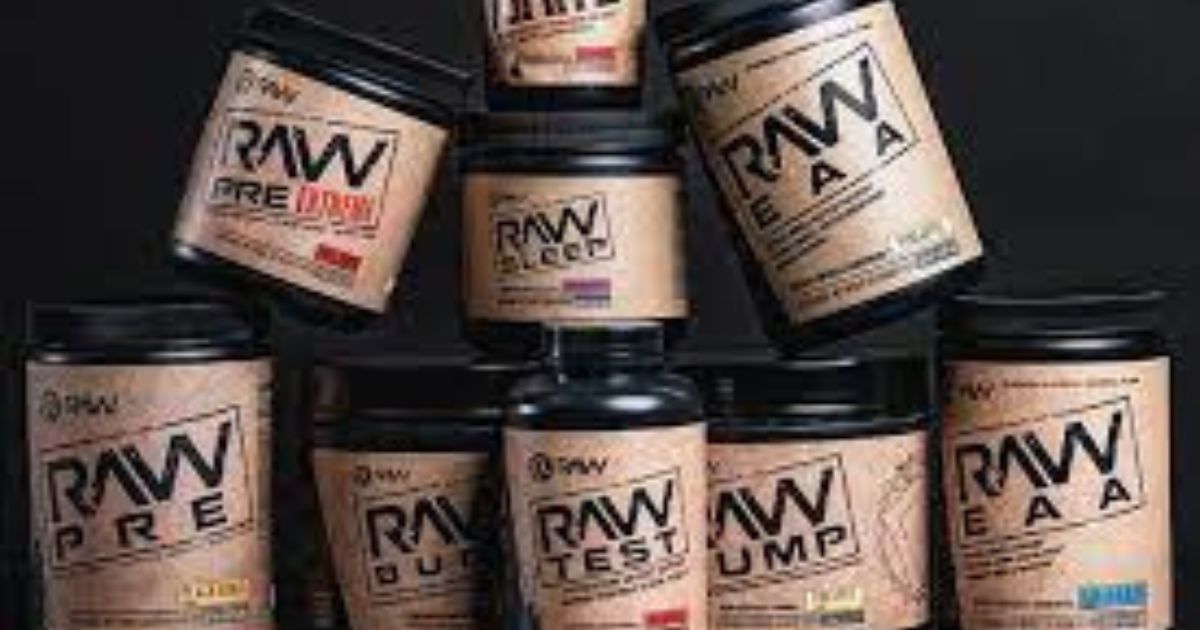A prime nutrition label discloses key information about a food product, including the serving size, calories, and nutrient amounts. In today’s health-conscious world, more and more people are becoming savvy about the food they consume.
Eating healthy has become a lifestyle for many, and understanding nutrition labels is crucial in this journey. To make informed and responsible choices, you need to know how to read and interpret the information on the nutrition label accurately. However, trying to decipher the jargon on the label can be daunting for many.
This is where a good understanding and knowledge of the prime nutrition label come into play. In this article, we will take a closer look at what nutrition labels are, what they mean, and how you can use them to make smarter food choices.

Credit: foodtank.com
Interpretation Of The Prime Nutrition Label
Understanding what is on the nutrition label can help you make healthier and informed choices when it comes to your diet. The prime nutrition label provides important information about the number of calories, macronutrients, and ingredients in a serving of food.
Here are some key points to help you interpret the prime nutrition label:
Understanding Serving Size And Servings Per Container
The serving size listed on the nutrition label indicates the amount of food for which the nutrition information is given. The servings per container tell you how many servings are in the entire package. This information can be helpful for managing portion sizes and calculating the total nutritional intake.
Decoding The Calorie Information
Calories are a unit of measurement for energy. The nutrition label shows the total number of calories per serving of the food. Understanding the calorie content of the food can help you adjust your intake to match your daily needs and maintain a healthy weight.
Identifying Macronutrients: Carbohydrates, Proteins, And Fats
Macronutrients such as carbohydrates, proteins, and fats are important for providing energy and building blocks for the body. The nutrition label shows the total amount of each macronutrient in a serving of the food. Keeping track of your macronutrient intake can help you maintain a balanced diet and support your dietary goals.
Determining The Percentage Daily Value (% Dv)
The % dv listed on the nutrition label shows you how much of a particular nutrient is in one serving of the food compared to the recommended daily intake. The % dv is calculated based on a diet of 2,000 calories per day.
Use this information to make informed decisions about your food choices.
Importance Of Reading The Ingredient List
The ingredient list on the nutrition label lists all of the components that make up the food. It is important to read this list to look for any allergens or ingredients that may affect your dietary concerns. This information can also help you avoid consuming any ingredients you wish to avoid or limit.
Understanding the prime nutrition label is an important tool for making informed decisions about your diet. By paying attention to serving size, calorie information, macronutrient content, % dv, and ingredient lists, you can make healthy choices and achieve your dietary goals.
The Role Of Macronutrients In Healthy Eating
Maintaining a healthy diet is crucial for both our short-term and long-term well-being. The human body requires a balance of macronutrients, which are the three primary components of our food – carbohydrates, proteins, and fats. Each macronutrient serves distinct roles in cognitive, physical, and emotional health.
Carbohydrates: Types, Sources, And Effects On The Body
Carbohydrates are organic compounds that come in various forms, serving as our body’s primary source of energy. Some sources of carbohydrates include fruits, vegetables, grains, and milk. Simple carbohydrates, such as sugar, are easily broken down by the body and provide immediate energy.
However, complex carbohydrates, found in whole grains and vegetables, take longer to digest, providing sustained energy levels.
Consuming too many carbohydrates can lead to weight gain and spikes in blood sugar levels. However, reducing carbohydrate intake to below requirements can lead to fatigue and reduced cognitive function.
To ensure a balanced diet, it’s advisable to consume carbohydrates that are high in fiber and low in sugar and refined grains.
Proteins: Types, Sources, And Benefits For The Body
Proteins are essential for building, repairing, and maintaining muscles, bones, and other tissues in the body. Animal-based foods, such as meat, eggs, and dairy products, are excellent sources of protein, while plant-based sources include beans, lentils, and nuts.
The body requires a constant flow of protein to function effectively. Protein deficiency can lead to muscle weakness, slow growth in children, and a compromised immune system.
Protein is particularly important for athletes, as it helps repair muscles and promotes muscle growth after exercise. It’s crucial to incorporate a mix of animal and plant-based protein sources into your diet to ensure adequate intake levels.
Fats: Types, Sources, And Impact On The Body
Fats have a bad reputation, but they serve essential roles in the body, including helping to insulate organs, protect nerves, and store energy. Saturated fats, which are found in animal-based products and processed foods, should be consumed in moderation, as they increase the risk of heart disease.
Unsaturated fats, on the other hand, which are found in nuts, seeds, and plant-based oils, are better for cardiovascular health and can lower the risk of heart disease.
The body requires a balance of different types of fats, with most adults requiring between 44 to 78 grams of fat per day, depending on their age and sex. A diet rich in unhealthy fats can lead to excessive weight gain and high cholesterol levels.
Finding The Right Balance Of Macronutrients For Your Diet
To achieve healthy eating, it’s crucial to find the right balance of macronutrients that work best for you. A balanced diet is typically composed of 45 to 65% carbohydrates, 10 to 35% protein, and 20 to 35% fats, depending on an individual’s needs.
To maintain a healthy weight, it’s key to monitor the number of calories you’re consuming versus the calories you’re burning. It’s also advisable to limit processed foods and opt for whole foods, which are typically richer in nutrients and will help keep you feel full longer.
With the right balance of macronutrients, a healthy diet can boost your energy levels, improve mental focus, and increase your overall quality of life.
The Hidden Ingredients And Additives In Food
Prime Nutrition Label: The Hidden Ingredients And Additives In Food
Unbeknownst to many, the food we consume regularly is filled with different types of additives and preservatives. If you are not familiar with these hidden ingredients, you could be unknowingly harming your health each time you grab a quick snack.
This article aims to provide a comprehensive view of these ingredients, the adverse effects they can cause, and tips for identifying and avoiding them.
Understanding Food Additives And Preservatives
Food additives are substances added to food to enhance its flavor, color, texture, and shelf life. Preservatives, on the other hand, are substances included in food to prevent bacterial growth and spoilage. Here are a few crucial points to remember about food additives and preservatives:
- There are over 3,000 food additives and preservatives in use today.
- The food and drug administration regulates and approves the use of food additives and preservatives, but this does not mean that they are always safe.
- Food additives and preservatives can cause adverse side effects, and the quantity used in food matters.
- Food manufacturers may disguise the presence of these ingredients in their food products, making it challenging to identify them.
Common Hidden Ingredients And Their Adverse Effects On Health
Many of the common food additives and preservatives used today can have negative effects on our health. Here are some of these substances and the impacts they can have on the body:
- High fructose corn syrup: This is a cheap, sweetener that is present in many sodas and juices. High fructose corn syrup has been linked to the risk of obesity, type 2 diabetes, and other health problems.
- Trans fats: These fats are extensively used in packaged foods like cookies, crackers, and baked goods. Trans fats can increase the risk of heart disease, obesity, and other health issues.
- Artificial sweeteners like aspartame: These sweeteners are used to provide a low-calorie alternative to sugar. Still, they have been linked to headaches, dizziness, and other adverse effects.
- Sodium nitrate and nitrite: These are preservatives used in processed meats. They can increase the risk of cancer, especially in the colon and digestive tract.
Tips For Identifying And Avoiding Harmful Ingredients
Identifying and avoiding harmful ingredients can be challenging, but it’s essential to lead a healthy life. Here are a few tips for identifying and avoiding these substances:
- Read the ingredient list: The ingredient list is where all the ingredients present in a food product are listed. Make it a habit to read this list to know what you’re consuming.
- Be mindful of buzzwords: Buzzwords like “low-fat,” “sugar-free,” and “all-natural” can be misleading. Study the actual ingredients to learn the truth.
- Choose fresh foods: Fresh foods are free from preservatives and additives compared to packaged ones. Opt for fresh fruits, vegetables, and nuts when you can.
- Choose organic foods: Organic food products are grown without using any chemical fertilizers, pesticides, or preservatives. They’re a safer option if you’re concerned about the ingredients in your food.
By being mindful of these hidden ingredients and taking adequate measures to avoid them, you can lead a healthier, happier life. Always remember that taking small steps towards healthier eating habits will contribute to significant health improvements in the long run.
Special Considerations For Dietary Restrictions And Allergies
Reading Nutrition Labels For Specific Dietary Requirements, Such As Gluten-Free Or Vegan
If you have dietary restrictions or food allergies, reading nutrition labels is an essential part of grocery shopping. Here are some tips on what to look for when reading labels for specific dietary requirements:
- For gluten-free diets: Look for labels that specifically say “gluten-free” or “contains no gluten”. Avoid products that contain wheat, barley, or rye.
- For vegan diets: Check for ingredients like milk, eggs, honey, and gelatin, as these are animal products. Products that are labeled as “plant-based” or “vegan” are usually safe choices.
- Pay attention to other allergens, such as peanuts, tree nuts, and soy, as these are common allergens that may not be suitable for everyone.
Identifying Allergens In Ingredient Lists
Reading ingredient lists is crucial to avoid foods that can trigger allergies or intolerances. Here’s what to look for when identifying allergens in ingredient lists:
- Allergens are required by law to be listed on food labels. Look for common allergens, such as peanuts, tree nuts, milk, eggs, wheat, soy, fish, and shellfish.
- Be aware of less common allergens, such as sesame, mustard, and celery, that may be listed under different names.
- Look for statements such as “may contain” or “manufactured in a facility that also processes” to identify potential cross-contamination risks.
Tips For Finding Suitable Substitutes For Common Allergens
Finding suitable substitutes for common allergens can be challenging, but it’s not impossible. Here are some tips to help you:
- For milk allergies: Try substitutes like almond milk, oat milk, soy milk, or coconut milk.
- For gluten-free diets: Try substitutes like rice, quinoa, potatoes, corn, or gluten-free bread and pasta.
- For egg allergies: Try substitutes like flax eggs, chia eggs, or commercial egg replacers.
- For nut allergies: Try substitutes like seeds, such as pumpkin or sunflower seeds, or soy-based products like tofu.
Remember to always read ingredient labels carefully, and if you’re not sure about a specific product, consult with a healthcare professional or a registered dietitian. By being diligent about reading nutrition labels and identifying allergens, you can ensure that you’re making healthy and safe choices when it comes to food.
Frequently Asked Questions On Prime Nutrition Label
What Is A Nutrition Label?
A nutrition label is a detailed breakdown of the nutrients and ingredients present in a food or beverage product, often found on the packaging.
What Does A Nutrition Label Tell Me?
A nutrition label tells you about the serving size, calories, nutrients, vitamins and minerals present, and what percentage of your daily recommended value they provide.
How Do I Read A Nutrition Label?
Start by looking at the serving size and calories, then check the daily percentage values for each nutrient. Look for high percentages of vitamins, fiber, and protein and low percentages of saturated fat, sodium, and added sugars.
Are Nutrition Labels Standardized?
Yes, nutrition labels are required by law to follow a standardized format which includes a specified list of nutrients, serving size, and daily values.
Can Nutrition Labels Be Misleading?
Sometimes, manufacturers can use misleading serving sizes or labeling tricks to make a food appear healthier than it actually is. It’s important to read nutrition labels carefully and understand what you’re consuming.
Conclusion
The prime nutrition label is an essential tool for anyone who wants to make informed choices about the food they consume. It provides valuable information about the calorie count, nutritional value, and ingredients of a food item. By paying close attention to these labels, you can ensure that you are eating a well-balanced diet that meets your dietary needs.
The information provided on these labels can also help you avoid consuming empty calories or harmful ingredients that can negatively impact your health. Ultimately, the prime nutrition label is a powerful tool that allows you to take control of your diet and make smarter, healthier choices.
With easy access to this information, you can start to make positive changes to your diet and feel the benefits of a more balanced, nutritious lifestyle. So next time you go grocery shopping, don’t forget to check the prime nutrition label!




